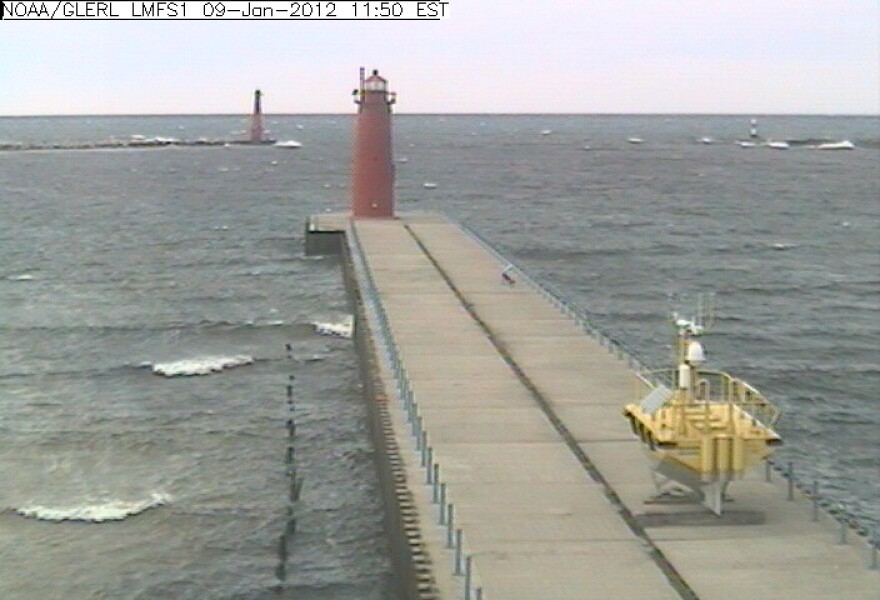An 8-ton research buoy that’s been floating around Lake Michigan collecting detailed data about wind conditions offshore has been brought back on land for the winter. With the mild winter the buoy stayed about four miles offshore for twice as long as researchers expected; 58 days instead of 30.
Turning data over to researchers
Arn Boezaart heads the Michigan Alternative and Renewable Energy Centerthat’s operating the buoy from Muskegon. He’s been able to see 10 minute averages of wind conditions in real time. But now that the buoy is back on land, he’s got data cards with wind data for every second the buoy was out there; plus data on bats and birds that flew by.
“I literally keep looking at this plastic bag in my brief case with this data card sitting in it and thinking ‘people don’t realize how valuable this is,” Boezaart said. “I sort of feel like I’m carrying gold bars in my case here. This is really first of its kind data.”
The wind data is more detailed than any available offshore in the Great Lakes now. Boezaart says researchers at Grand Valley State University will compile a report from the wind data while researchers at Michigan State University work with data collected about bats and birds. Boezaart said reports from the data won’t be available until early March.
The buoy itself could probably withstand the winter conditions, Boezaart said. The U.S. Department of Energy (which helped fund the buoy) would love to have it out year-round. “But they have not yet offered to replace any equipment that might get lost or might get damaged or destroyed as a result, Boezaart said, “So this first season we’re being kind of cautious. Perhaps next winter we may in fact leave it out all winter long.”
The buoy will continue collecting wind data on a pier right next to the National Oceanic and Atmospheric Administration’s Great Lakes Environmental Research Laboratory in Muskegon. You can see it sitting there on one of NOAA’s webcams.
Buoy to head out further this spring, despite funding concerns
Next season Boezaart says the buoy will head 35 miles offshore to middle of Lake Michigan, almost directly in between Muskegon and Milwaukee, Wisconsin.
But the future of the project beyond 2012 is still in jeopardy. The State of Michigan notified MAREC in August it would not fund about $800,000 of the project that was to be used to match a federal grant. That’s because of a court ruling in a case involving the Public Service Commission, declaring the agency did not have legislative authority to run the program that provided the grant (the decision had little to do with the grant itself).
Boezaart said funding ran out on December 31, 2011. He said Grand Valley State University has committed to sending the buoy back out in early March. But Boezaart said he hopes to find another funding partner who can provide the money to match the federal dollars. The federal government has granted a 90-day extension to MAREC to find that partner.






